Unlocking the Power: Art and Science of Smash Factor in Golf
Smash Factor in golf is the efficiency of energy transfer from club head speed to ball speed upon impact. Achieving a Smash Factor of 1.50 or higher optimizes this transfer, enhancing distance and accuracy. Center-face contact and proper swing technique play a pivotal role. Measuring and tracking Smash Factor using launch monitors aids improvement.

Key Takeaways
- Smash Factor in golf quantifies energy transfer efficiency from club head speed to ball speed upon impact. Achieving higher values enhances distance and accuracy.
- Hitting the sweet spot is vital. Optimal club face impact maximizes energy transfer, ensuring a high Smash Factor for longer shots.
- Mastering Smash Factor enhances all aspects of your game, from tee shots to approach shots, increasing distance and consistency through efficient energy transfer.
- Smash Factor influences launch angle, spin rate, and shot dispersion. Utilizing launch monitors provides valuable insights for optimizing launch conditions and performance.
- Smash Factor goes beyond just ball speed and requires more than increased club head speed. Focus on technique, equipment optimization, and dispelling misconceptions for better results.
Introduction
As golfers progress in their understanding of the game, they often become interested in exploring nuances that affect shot distance and accuracy. One of these important factors is called Smash Factor.
Smash Factor is a term used to describe the relationship between club head speed and ball speed. Essentially, it refers to how efficiently the energy from your swing transfers into the ball at impact. This simple metric can have a significant impact on your overall golf game, as it directly affects both distance and accuracy. When you hit a golf ball with maximum efficiency, you are said to have achieved a Smash Factor of 1.50 or higher.
This means that for every mile per hour of club head speed generated at impact, there is an accompanying 1.5 miles per hour increase in ball speed. Understanding this concept is key to maximizing ball speed in golf, which can lead to longer drives off the tee or more control with your irons and wedges around the green. By increasing your Smash Factor through proper swing technique and center-face contact, you can ensure that all parts of your game benefit from this efficiency.
But how exactly does Smash Factor work?
The answer lies in understanding how energy transfer works within your golf swing. When you make center-face contact with the ball at high club head speeds, more energy goes into moving the ball forward rather than being lost due to inefficient turf interaction or mishits caused by common swing flaws in golf. As such, measuring and tracking this metric through tools like launch monitors can give you invaluable insight into areas where you may need improvement.
Overall, whether you are new to golf or a seasoned pro looking for ways to improve their game, understanding Smash Factor is essential for maximizing distance while maintaining accuracy on each shot. By focusing on achieving optimal club head speed impact during each swing through efficient turf interaction and center-face contact, you can increase efficiency and become a more effective golfer.
"Smash Factor, the efficient energy transfer between club head and ball, holds the key to golf mastery. Achieving a 1.50 or higher Smash Factor unleashes the potential for longer drives and precise shots, enhancing your entire game."
But how exactly does Smash Factor work? The answer lies in understanding how energy transfer works within your golf swing.
When you make center-face contact with the ball at high club head speeds, more energy goes into moving the ball forward rather than being lost due to inefficient turf interaction or mishits caused by common swing flaws in golf. As such, measuring and tracking this metric through tools like launch monitors can give you invaluable insight into areas where you may need improvement.
Enjoying this article? Read more:
Check out this video below from US GOLF TV‘s Youtube channel on Understanding Smash Factor in Golf:
Overall, whether you are new to golf or a seasoned pro looking for ways to improve their game, understanding Smash Factor is essential for maximizing distance while maintaining accuracy on each shot. By focusing on achieving optimal club head speed impact during each swing through efficient turf interaction and center-face contact, you can increase efficiency and become a more effective golfer.
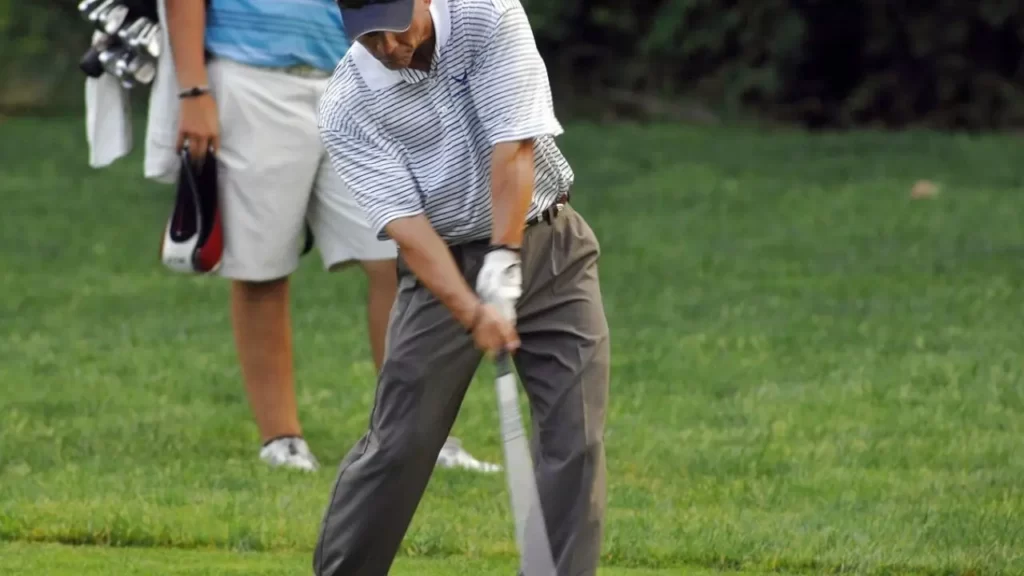
The Science Behind Smash Factor
Smash Factor in golf is the study of how efficiently a golfer transfers energy from their club to the ball. This energy transfer is referred to as smash factor, and it’s a measure of how effectively the club face strikes the ball at impact. The goal of any golf swing is to achieve maximum energy transfer, which results in higher ball speed, greater distance, and improved accuracy.
Club head speed plays a crucial role in determining your smash factor. The faster your club head speed, the more potential energy you can generate.
However, it’s essential to strike the ball with the sweet spot of your clubhead for maximum efficiency. The sweet spot is usually located near the center of gravity of your clubhead and offers optimal contact with the ball for enhanced impact.
Using launch monitors in golf has revolutionized our understanding of the golf game by providing precise data about every aspect that impacts our performance, including our club data during each shot. Exploring your golf swing efficiency through data analysis allows you to identify areas that may need improvement or adjustment.
Dispersion is another critical element affected by smash factor which means how tightly clustered shots are around a target on average; dispersion becomes tighter as balls fly further when you increase power transfer during impact. Inaccurate shots must go wide left or wide right due to incorrect face angle or shot bend caused by swing flaws analysis.
The importance of understanding and improving your smash factor cannot be overstated since it plays such a vital role in optimizing all aspects of your game. From increasing distance off tee shots and bettering landing angle approach shots to improving overall accuracy and consistency on every shot you take – there are many benefits to mastering this fundamental concept in golf playing!
Enjoying this article? Read more:
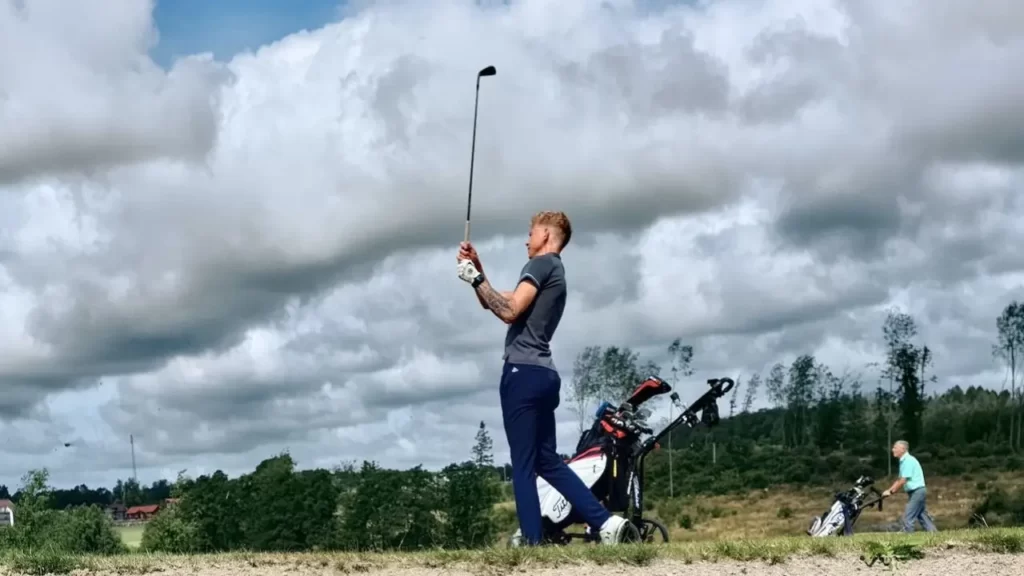
The Impact of Smash Factor on Your Golf Game
When it comes to golf, every player is always looking for an edge to improve their game. One of the most important factors to consider is the impact of Smash Factor on your golf game.
Understanding this concept can help you take your game to the next level and achieve better results on the course. Smash Factor in golf refers to the efficiency with which a clubface transfers energy into a golf ball at impact.
The higher the Smash Factor, the more efficient the energy transfer and thus, greater distance optimization in golf. Simply put, if you can achieve a high Smash Factor consistently, you will hit longer shots that will give you an advantage over other players.
The Sweet Spot is another crucial element in understanding Smash Factor in Golf. This is where center-face contact occurs between the ball and clubhead resulting in maximum efficiency and distance.
So it’s vital for players to develop great club face control as hitting off-center reduces smash factor resulting in lower peak trajectory and less ball speed. Golf swing efficiency also plays an important role when it comes to Smash Factor.
"In the world of golf, seeking an advantage is constant. Smash Factor's impact cannot be overstated—it's the gateway to greater efficiency, longer shots, and superior performance. The Sweet Spot, swing technique, and data analysis together forge the path to mastery."
Correcting swing path issues that lead to poor contact with turf interaction can adversely affect smash factor resulting in short distances from tee shots; so improving swing technique and form can increase smash factor thereby hitting longer drives. Club data analysis is another tool used by professionals all over the world for optimizing their game.
By analyzing data from every shot they make during practice or competition rounds, professionals can determine what changes need to be made for optimal performance on each hole thereby achieving optimal distance optimization techniques. Understanding Smash Factor is critical to improving your overall performance on the golf course.
Developing great club face control combined with good swing technique will help maximize energy transfer needed for achieving a high Smash Factor leading to increased distance off each shot giving players an edge over their competitors. By applying these principles effectively using techniques like club data analysis or correcting swing path issues players can surely optimize their performance levels even further.

The Ideal Smash Factor in Golf
If you’re new to golf, you might not be familiar with what smash factor is.
In simple terms, smash factor is the ratio of ball speed to club head speed at impact. The higher the number, the better.
To achieve an ideal smash factor in golf, you need to make sure that your swing technique and equipment are optimized for maximum efficiency. One of the most important factors in achieving an ideal smash factor is center-face contact.
If you hit the ball off-center, your smash factor will suffer. That’s why it’s important to work on your club face control techniques and make sure that you’re hitting the ball consistently in the sweet spot.
Another key element of achieving an ideal smash factor is maximizing ball speed. There are a number of distance optimization techniques that can help you do this, such as adjusting your launch angle and correcting your swing path.
By analyzing club data using launch monitors and other tools, you can identify areas where you need improvement and make adjustments accordingly. In addition to maximizing ball speed, achieving optimal club head speed is also crucial for achieving an ideal smash factor in golf.
This means working on developing a strong and efficient golf swing that maximizes power while maintaining proper form. It’s important to understand how launch conditions impact smash factor.
Factors such as attack angle and landing angle can have a significant impact on how much distance you get from each shot. By analyzing club data using launch monitors and other tools, you can identify areas where improvements can be made to achieve better launch conditions for optimal performance.
Overall, achieving an ideal smash factor in golf requires a combination of good technique, efficient equipment, and careful analysis of club data using tools like launch monitors. With practice and dedication, though, anyone can improve their smash factor over time and start hitting longer shots with greater consistency!
Enjoying this article? Read more:
Check out another video below from US GOLF TV‘s Youtube channel:
Enjoying this article? Read more:
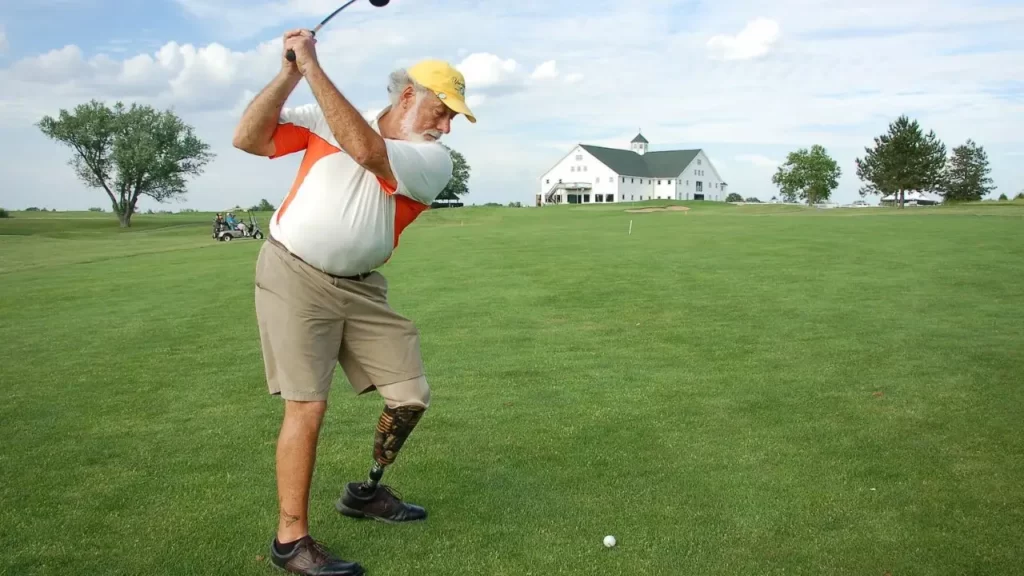
How to Improve Your Smash Factor
Improving your smash factor in golf requires a combination of both technical and physical changes to your golf swing. First, it’s important to understand that achieving the optimal smash factor is all about energy transfer.
This means that the energy generated by your golf swing needs to be efficiently transferred from the club head to the ball at impact. To achieve this, you need to focus on improving your golf swing mechanics.
One way to improve your swing efficiency is by working on club face control. This is essential for achieving center-face contact, which is crucial for maximizing energy transfer and achieving high smash factors.
To work on club face control, try focusing on hitting shots with a square club face at impact. Pay attention to where the ball lands and how it performs after impact.
You can also use launch monitors in golf or video analysis software to help identify any swing flaws that might be affecting your club face control. Another key factor in improving smash factor is optimizing launch conditions for maximum distance.
This involves finding the right combination of loft, ball speed, and spin rate for each shot you hit. To do this effectively, you need to understand how these variables are affected by different aspects of your swing, like attack angle and club head speed in golf.
To improve launch conditions, try experimenting with different loft settings on your irons or drivers until you find a combination that works well for you. You can also practice using different techniques, like adjusting your approach angle or using specific distance optimization techniques, depending on the situation.
Ultimately, improving smash factor comes down to ensuring optimal center-face contact while using efficient golf swing mechanics. By focusing on improving these areas of your game and taking advantage of tools like launch monitors in golf or video analysis software, you can start seeing improvements in both distance and accuracy over time!
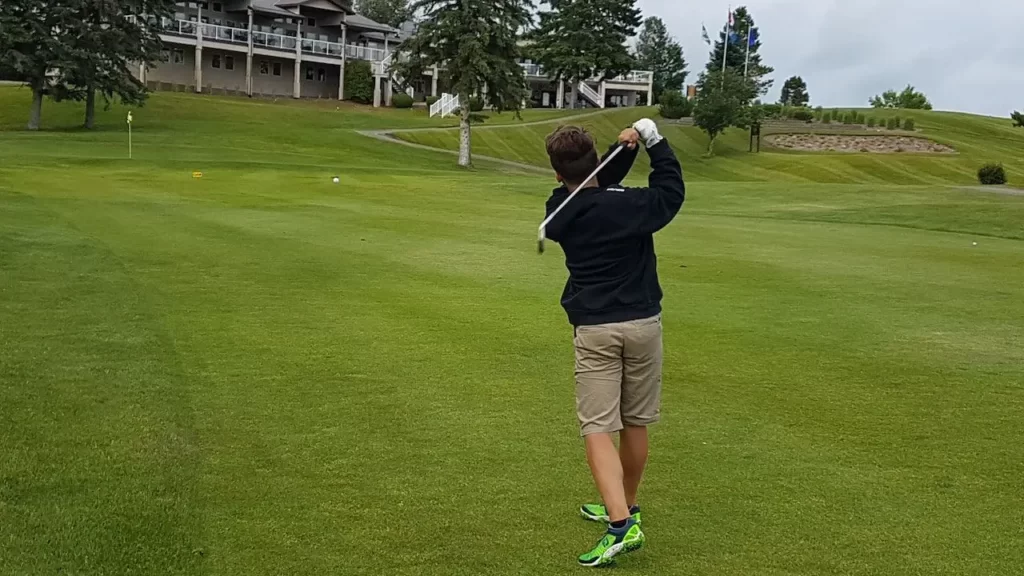
Measuring and Tracking Your Smash Factor
Measuring your smash factor is a crucial part of improving your golf game.
By measuring your smash factor, you can see how efficient you are at transferring energy from the clubhead to the ball. This gives you a clear understanding of what you need to work on in order to improve your distance, accuracy, and overall performance.
There are several ways to measure and track your smash factor. One common method is by using launch monitors or simulators that provide detailed club data such as ball speed, launch angle, and spin rates.
These devices also calculate your smash factor by dividing ball speed by club head speed. This gives you an accurate measurement of how well you are hitting the ball.
Another way to track your smash factor is by using a shot analyzer app that records video footage of your swing and analyzes it for key metrics such as club face angle influence, swing path, center-face contact in golf, and shot bend. These apps also provide suggestions on how to improve these metrics based on personalized feedback.
Club fitting is another important aspect of measuring and tracking your smash factor. By getting fitted for clubs that match your swing characteristics, such as loft, lie angle, shaft flex, and weight distribution, you can optimize the efficiency of energy transfer from the clubhead to the ball.
In addition to using technology tools like launch monitors, simulators, and shot analyzer apps or utilizing professional help through a golf coach or fitter, there are aspects under the golfer’s control that have a direct link with their efficiency in transferring energy from the clubhead to the ball, like club face control techniques while making contact with turf interaction at impact, which can be practiced through swinging drills that enhance the golfer’s control mechanism over their shots, thereby giving them better distance optimization in golf over time.
Ultimately, mastering one’s consistency with their tempo complemented by consistent center-face contact in golf will drastically improve their smash factor measurements, resulting in better overall performance.
Enjoying this article? Read more:

Common Misconceptions About Smash Factor
Smash factor is a term that is widely used in golf, but unfortunately, it is also surrounded by several misconceptions.
One of the common misconceptions about smash factor is that it only affects your ball speed. While ball speed is one of the critical components impacted by smash factor, other factors such as launch angle and spin rate are equally important.
A high smash factor does not necessarily mean that you have achieved optimal launch conditions for your shot. Another misconception about smash factor is that it can be improved solely by increasing club head speed.
Although club head speed plays a role in determining your smash factor, it is just one aspect of what constitutes an efficient golf swing. Improving your golf swing mechanics and optimizing your equipment through proper club fitting can also help improve your smash factor.
Another misconception about smash factor revolves around the importance of the sweet spot in determining the value. Although hitting the sweet spot on a golf club can produce a higher smash factor, hitting outside of it will result in low values.
With modern technology and analyzing club data in golf, we have come to realize that off-center hits can still produce high-smash factors if other variables align correctly. Many people believe that using launch monitors in golf to measure their smash factors will automatically improve their game without making any changes to their swings or equipment.
However, this couldn’t be further from the truth. While using launch monitors can provide valuable insights into various aspects of your game, they are only useful if you use them to make informed decisions and take corrective actions to address any identified issues.
Understanding what exactly affects and determines a good smash factor value helps dispel some common misconceptions surrounding this critical component of efficient swings and distance optimization in golf. By learning how to maximize efficiency within your swing while utilizing appropriate techniques such as club face control techniques or correcting swing path flaws via turf interaction analysis with specialized programs, you can increase your chances of achieving an optimal smash factor with every shot.
Check out this video below from GolfersRx‘s Youtube channel about what Smash Factor is:
Enjoying this article? Read more:
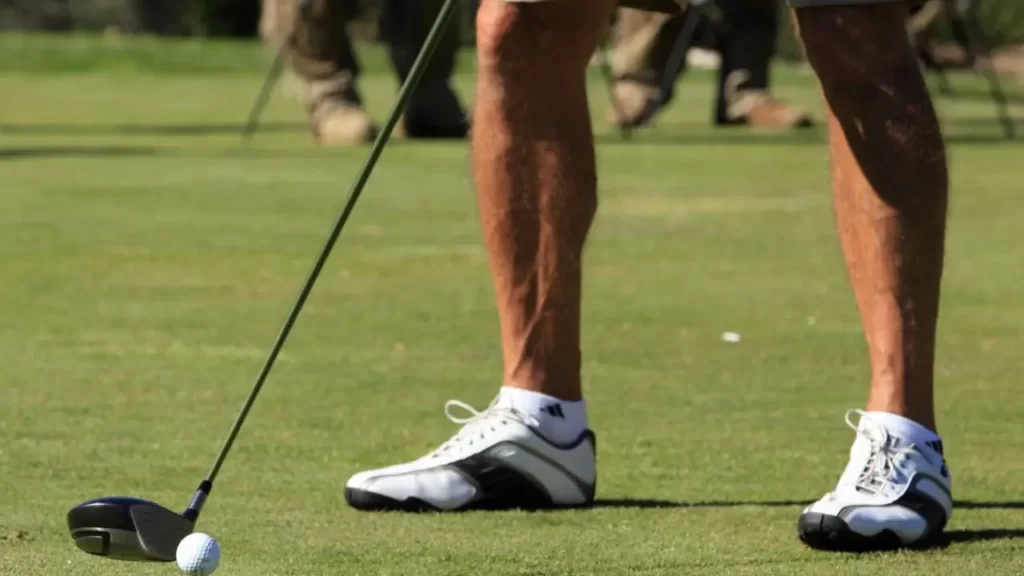
Conclusion
Understanding smash factor is essential for any golfer looking to maximize ball speed and improve their game. By knowing the science behind it and how to measure and track it, golfers can focus on improving their efficiency and center-face contact to achieve the ideal smash factor.
It’s important to remember that maximizing your smash factor isn’t just about increasing your swing speed or head weight. Correcting the swing path and exploring golf swing efficiency are equally important in achieving peak trajectory and landing angle.
By identifying common swing flaws in golf, you can work on correcting them and ensuring center-face contact for maximum ball speed. The sweet spot importance cannot be overstated when discussing smash factor.
As the point of center-face contact, hitting the sweet spot is crucial in achieving peak height and optimal ball flight. In fact, even a slight deviation from perfect center-face contact can have a significant impact on your smash factor.
Overall, understanding smash factor is just one piece of the puzzle when it comes to improving your golf game. But by taking the time to learn about it, measure it, track it, and work towards maximizing it through efficient swings with proper center-face contact, you’ll be well on your way to unlocking new levels of performance on the course.
FAQs
What is a perfect smash factor?
A perfect smash factor is when the ball speed and club head speed ratio is optimized for maximum energy transfer, usually resulting in a value around 1.50 or higher.
How do you calculate smash factor in golf?
Smash factor is calculated by dividing the ball speed by the club head speed. The formula is: Smash Factor = Ball Speed / Club Head Speed.
Why is 1.5 the max smash factor?
A smash factor of 1.5 indicates efficient energy transfer. At this point, most of the club’s energy is transferred to the ball, maximizing distance and performance.
How do I improve my smash factor?
To improve your smash factor, work on center-face contact, correct swing flaws, optimize equipment, and focus on consistent, efficient swings.
Can smash factor be too high?
Yes, an excessively high smash factor might indicate that other factors like launch angle or spin rate are being compromised. Balance is key.
How can I increase my ball speed?
Increasing ball speed involves improving club head speed, optimizing impact conditions, and using equipment suited to your swing.
How do I increase my swing speed driver?
Enhance swing mechanics, work on flexibility, and consider tailored exercises to build strength and speed for improved driver performance.
Does temperature affect smash factor?
Yes, temperature affects air density, which in turn influences the flight of the ball. Colder temperatures may lead to slightly lower smash factors.
Share this Post
Toni Benedito
Keep Reading
Follow Us
Recent Posts

How Do Pro Golfers Get Paid? The Business of Golf
Professional golfers get paid both before and after tournaments. Before a tournament, they receive appearance fees, sometimes exceeding $1 million, to attract top players. After the tournament, earnings depend on their placement, with the PGA

How Much Do Golf Players And Pros Make? You Won’t Believe It!
Professional golfers earn substantial incomes through tournament winnings, sponsorship deals, and endorsements. Top players on the PGA Tour can make millions annually, with significant earnings from prize money and lucrative brand partnerships. For example, Rory

The Shocking Cost: How Much Does It Cost to Fly with Golf Clubs?
Flying with golf clubs can be a hassle, but it’s worth it for avid golfers. Costs vary by airline, ranging from $30 to $150 per way. Southwest Airlines offers a generous policy, allowing one set

Why Do Golfers Tape Their Fingers Before Hitting the Course?
Golfers tape their fingers to prevent injuries from repetitive motions, provide support for existing injuries, and improve grip comfort. It’s a popular technique among amateurs and pros alike, offering a lightweight and effective solution compared

How Much Does a Round of Golf Cost? Are You on Par?
The cost of a round of golf varies widely based on factors like course type, location, and time of play. Public courses typically range from $30-$100 per round, while exclusive ones like Augusta National or

Hidden Fees: How Much Does It Cost To Rent a Golf Cart
Wondering how much it costs to rent a golf cart? Explore factors like location, rental duration, and cart type impacting prices. Daily rates range from $50 to $80, while weekly rentals can vary from $200
Table of Contents







